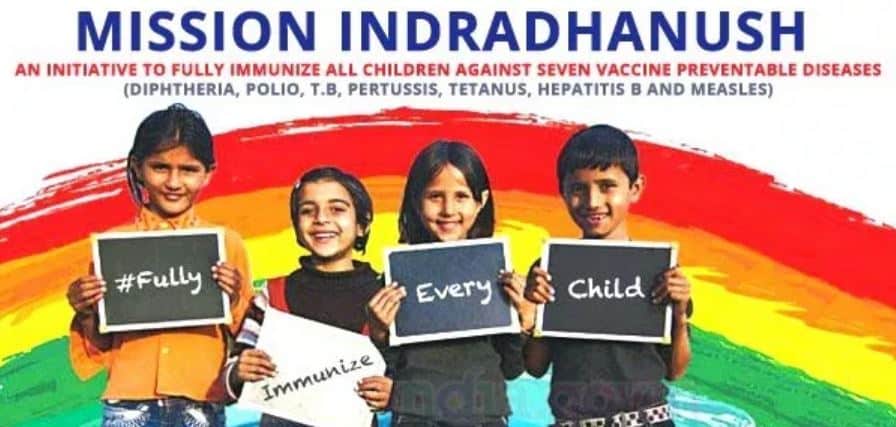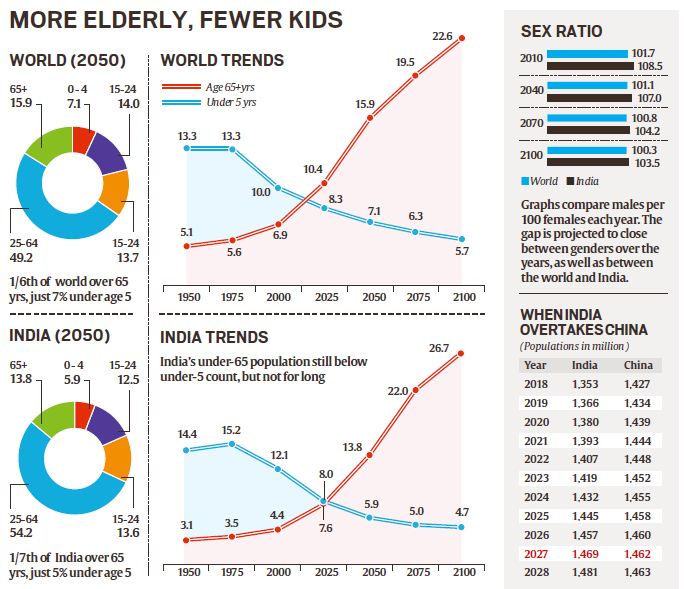Table of Contents
Intensified Mission Indradhanush 2019 | UPSC – IAS
Intensified Mission Indradhanush (IMI), is one of 12 best practices from around the world to be featured in a special issue of the British Medical Journal.
Background Knowledge about Mission Indradhanush | UPSC – IAS
- In India, five lakh children die every year due to vaccine-preventable diseases; 95 lakh are at risk because they are unimmunised or partially immunised. But immunization coverage had slowed down and it increased at the rate of 1% per year between 2009 and 2013.
- To accelerate this coverage Mission Indradhanush was envisaged and implemented since 2015 to rapidly increase the full immunization coverage to 90%.
About Intensified Mission Indradhanush (IMI) | UPSC – IAS
- It has been launched by the Government of India to reach each and every child under two years of age and all those pregnant women who have been left uncovered under the routine immunisation programme.
- The special drive will focus on improving immunization coverage in select districts and cities to ensure full immunization to more than 90% by December 2018.
It will have inter-ministerial and inter-departmental coordination, action-based review mechanism and intensified monitoring and accountability framework for effective implementation of targeted rapid interventions to improve the routine immunization coverage.
- It would be closely monitored at the district, state and central level at regular intervals. Further, it would be reviewed by the Cabinet Secretary at the National level and will continue to be monitored at the highest level under a special initiative ‘Proactive Governance and Timely Implementation (PRAGATI)’.
- The first two phases of Mission Indradhanush contributed to an increase in Full Immunization Coverage by 6.7%. This increase, however, would not be sufficient to achieve full Immunization Coverage of more than 90% of newborns by 2020 as aimed under Mission Indradhanush which would need a supplemental aggressive action plan to cover all left outs and drop outs in select districts and urban cities with low routine immunization coverage in a specific time-frame.
Challenges to immunization (Vaccination) | UPSC – IAS
- It targets to immunize all children against seven vaccine preventable diseases namely –
- Diphtheria,
- Pertussis,
- Tetanus,
- Childhood Tuberculosis,
- Polio,
- Hepatitis B and Measles.
- In addition to this, vaccines for Japanese Encephalitis, Haemophilus influenzae type B, inactivated polio vaccine, Rotavirus vaccine and Measles Rubella vaccine are also being provided in selected states.
- Limited capacities of staff (vacant positions and lack of training), particularly in poor-performing states and at the field level, and gaps in key areas such as predicting demand, logistics and cold chain management, which result in high wastage rates.
- India lacks a robust system to track vaccine-preventable diseases. Vaccination coverage varies considerably from state to state, with the lowest rates in India’s large central states.
Other challenges includes-
- Lack of adequate health infrastructure and insufficient government investment;
- Low demand caused by poor education of the population and presence of anti-vaccine advocates.
- Parents’ lack of awareness of the immunisation benefits, schedules and locations.
- Inconvenient timings of vaccination for many people (during working hours).
- Poor community participation.
A Way forward | UPSC – IAS
- Strengthening of health management information systems, including data recording and registration systems, called Mother and Child Tracking System (MCTS).
- The linking of already available systems with the unique identification like Aadhaar can facilitate tracking of the beneficiaries.
- Furthermore, development of universal health cards and electronic record maintenance for maternal and child health care is highly desirable. This can facilitate care seeking by the migrant population in urban areas and can be used to decide resource allocations.
- Devoting greater financial resources towards immunisation coverage with concerted efforts to improve social mobilisation for immunisation is warranted.
- Strengthening a network of community health workers in urban and peri-urban areas to contribute towards progress in immunisation coverage by reaching out to both slum as well as non-slum populations is of utmost priority.
- Facilitating improvement in knowledge and awareness regarding child immunisation can be intensified with the use of mass media, interpersonal communication, school and youth networks.
- Reaching out to communities and areas with poor immunisation coverage with well-articulated strategies for community awareness will be key to success.











